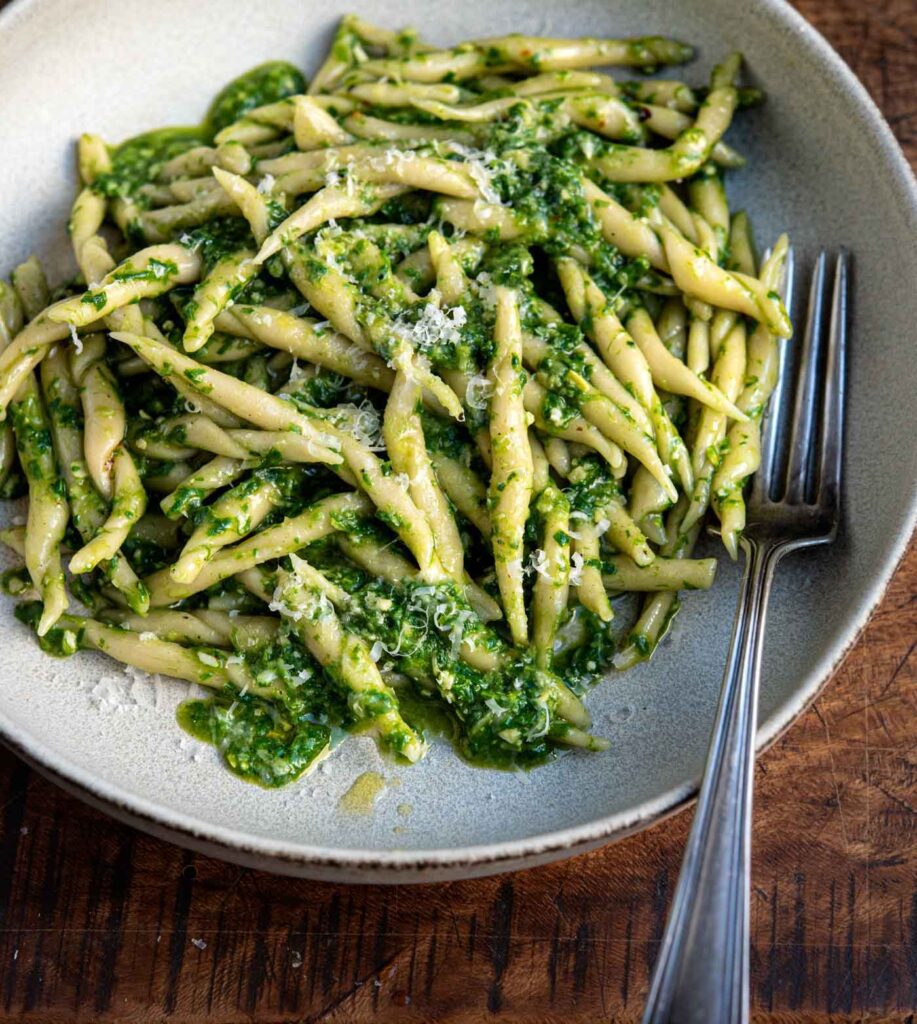Trofie comes from Liguria in northwest Italy, in particular the area of Camogli, as well as areas of Tuscany bordering Liguria. They are spindle-shaped, spirals with tapered ends.
They’re traditionally made with wheat flour enriched with bran, potatoes, bread or chestnut flour and water. And, served with pesto alla Genovese — made with basil, garlic, pecorino, Prescinsêua (a soft cow’s milk cheese, described as having a consistency half way between yogurt and ricotta cheese), pine nuts, salt and olive oil — along with green beans and potatoes. I made mine with fine semolina (semola rimacinata di grano duro). Although, am intrigued to try them with potatoes or chestnut flour.
At the onset of every spring, I always look forward to the first of the season ramps, a North American species of wild onion. They are my unofficial marker that spring has finally, well, sprung. So, instead of your typical Ligurian basil pesto, I whipped up a batch of ramp pesto. I used the ramp leaves for the pesto and sautéed up their stems and added them as a garnish. But, of course, you could serve with a traditional basil pesto or other pesto of your choosing.
As for forming the trofie, they can be rolled with the side of your hand, which takes some practice, or even easier, rolled with the use of a dough scraper, to create a spiral (as depicted below).
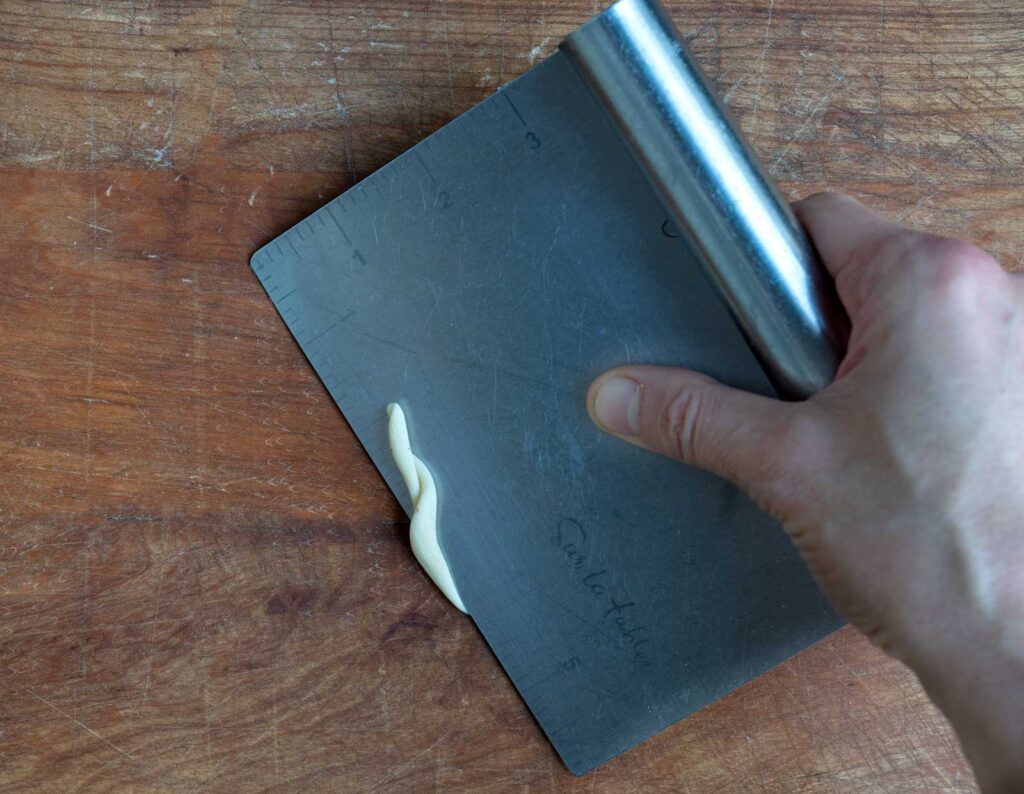
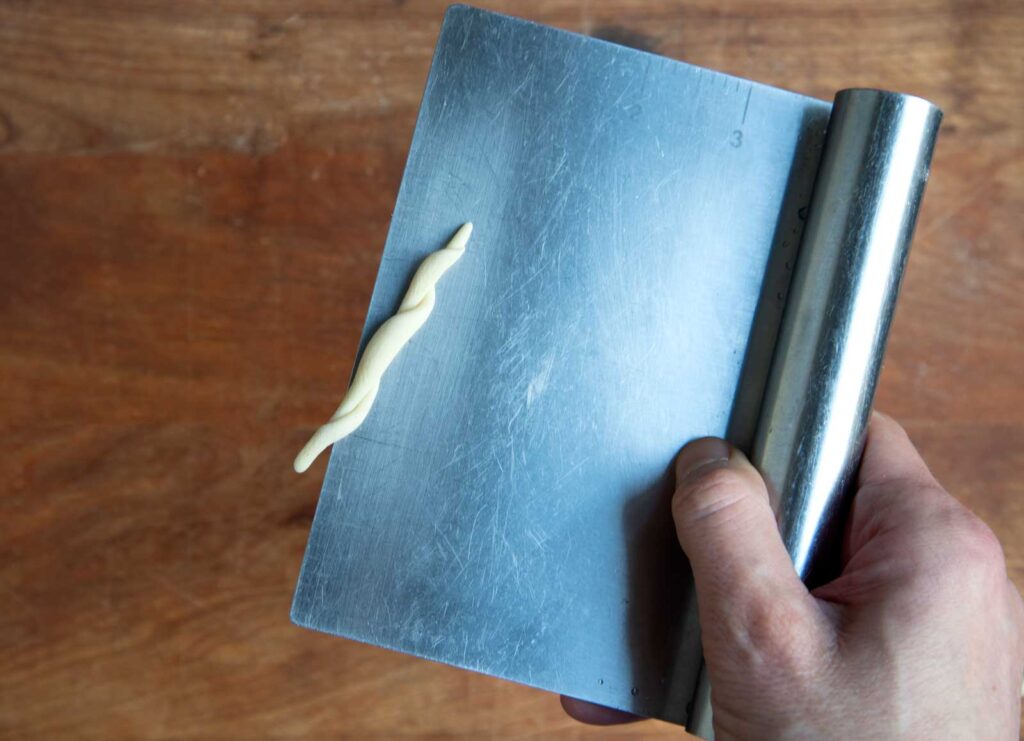
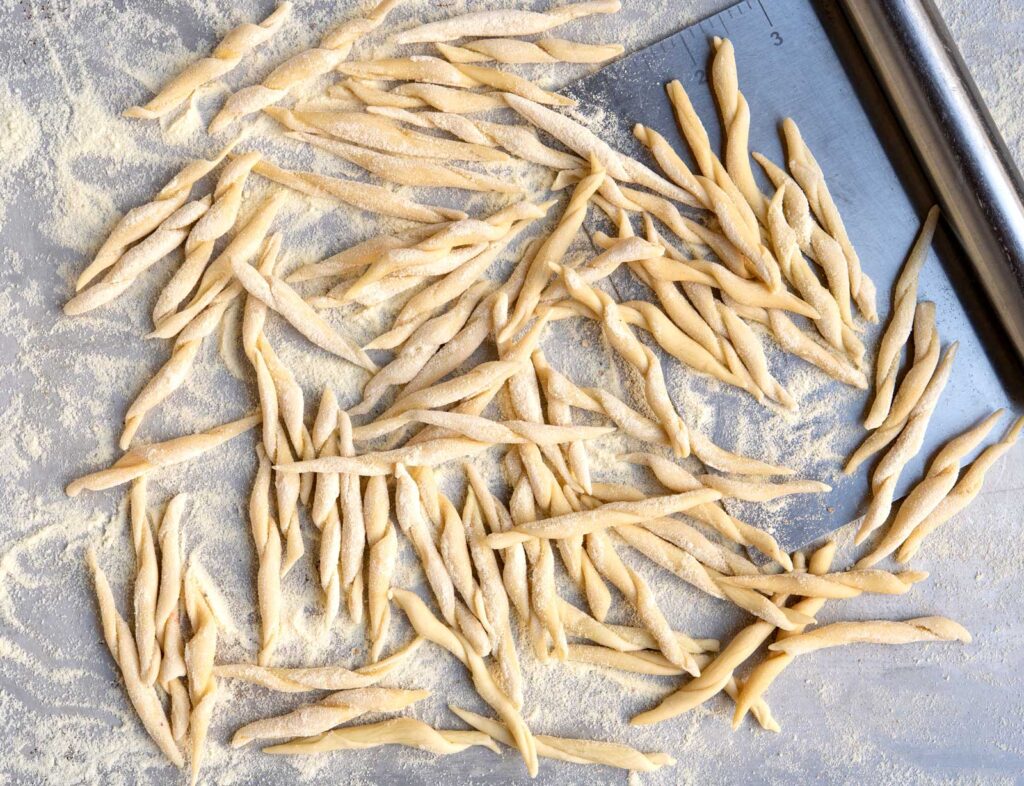
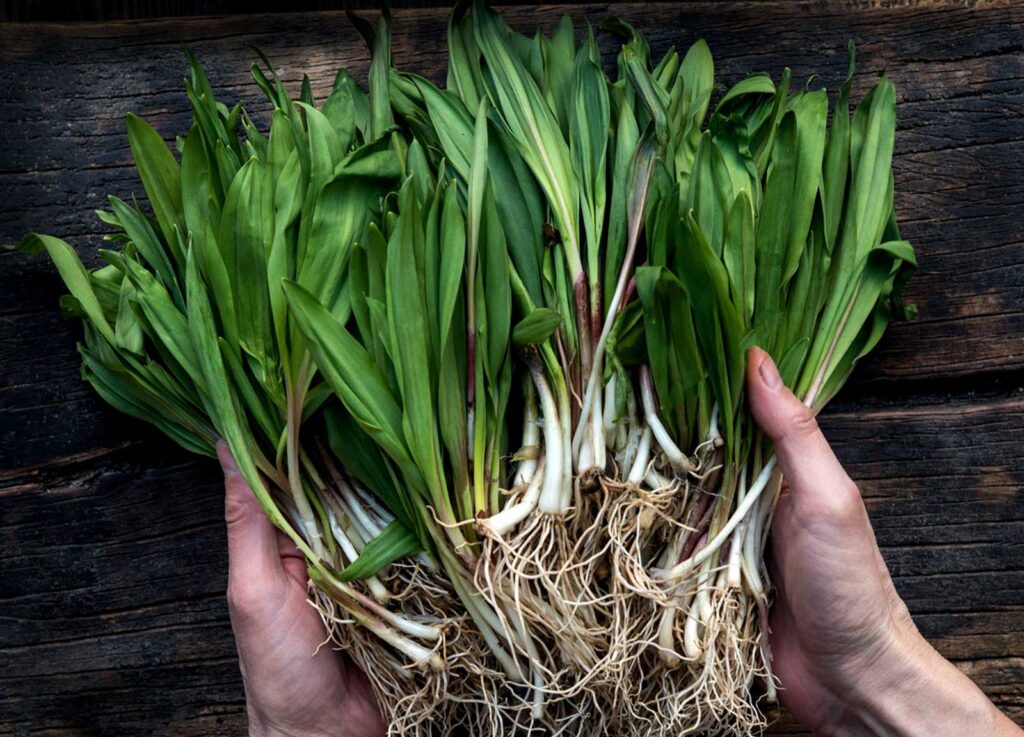
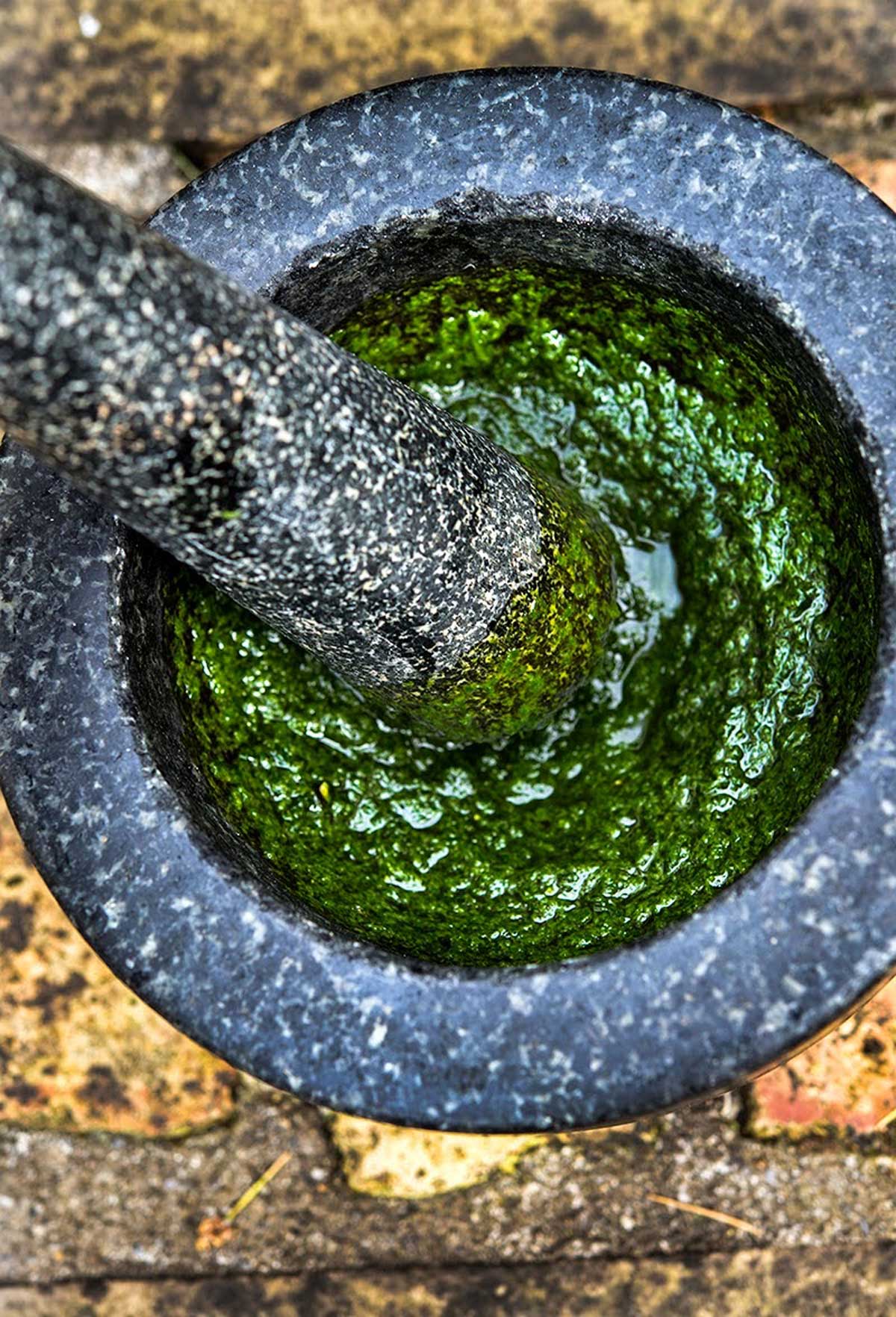
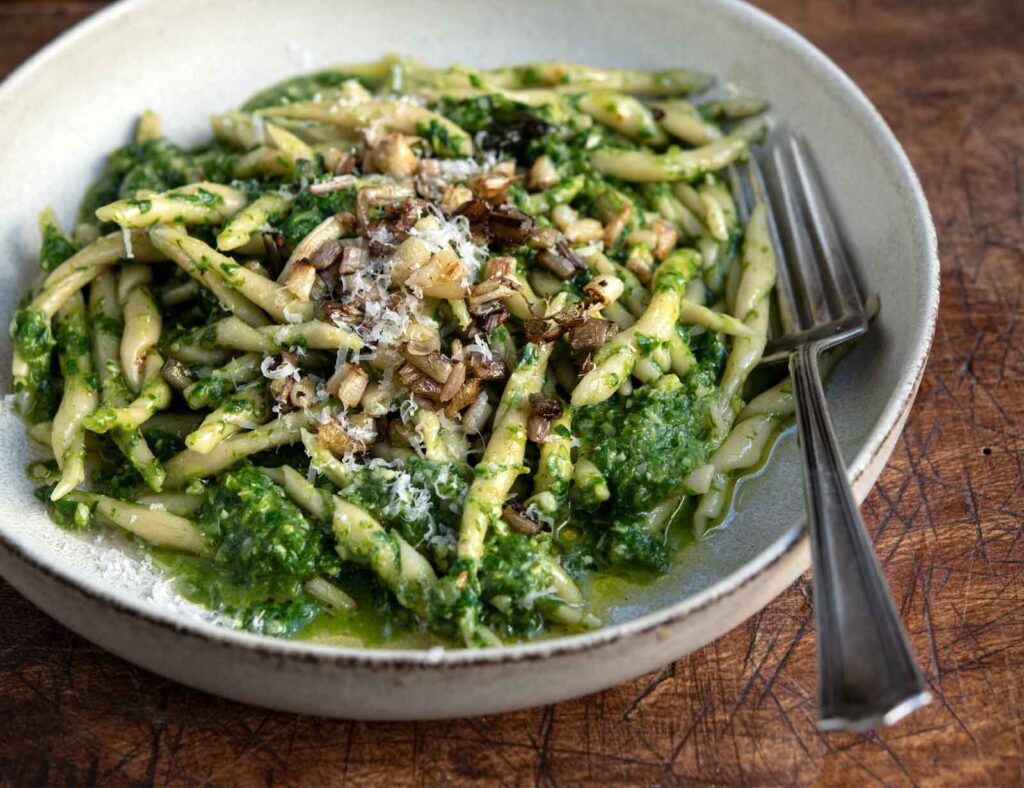
Trofie
Ingredients
- 400 grams semola (rimacinata di grano duro)
- ~200 grams room temperature water
- pinch of salt
Instructions
- Mound the flour and make a well in the middle. Dissolve the salt in the water. Add the water to the well. With a fork, slowly begin to incorporate the flour walls into the well. Continue mixing the flour and water until you have a shaggy, solid mass. At this point, using your hands, start folding and forming the dough, incorporating the rest of the flour until you have a stiff, solid mass (removing any dry clumps of flour). Knead the dough for about 10 minutes. Drive the heel of your hand into the dough, rotate the dough 45 degrees, and repeat until the dough is firm and bouncy and has a smooth, silken texture. Wrap the dough in plastic and allow it to rest for 30 minutes.
- Sprinkle a baking sheet with a dusting of semolina to prevent the pasta from sticking. Cut off a portion of dough. Keep the rest of the dough wrapped in plastic wrap to prevent it from drying out. On a clean work surface (no flour; flour will create friction and make it difficult to roll the dough), roll out the piece of dough to form a thin rope, about 1/4-inch wide. Cut into approximately 1/2-inch pieces. Roll the piece between the palms of your hand until long and slender with tapered ends. At approximaely a 45 degree angle to both the table and dough, apply light pressure with the dough scraper. Starting at the far end of the peicce of dough, drag the scraper away from you, making an arc shape, until you reach the other end of the dough, forming a spiral (refer to video for further guidance). Repeat with the remaining dough.
Ramp Pesto
Ingredients
- 6 ounces ramps, leaves and stems/bulbs separated
- 1/4 cup loosely packed, Parmesan
- 2-3 tbsp pine nuts (or pistachios)
- salt and pepper
- 1/3-1/2 cup olive oil
Instructions
- Prepare an ice water bath. Bring a pot of salted water to a boil. Drop in the ramp leaves and boil for 10 seconds. Immediately plunge into the ice water bath. Drain and squeeze out any excess moisture.Combine the blanched ramp leaves, Parmesan, and nuts in a food processor. Season with salt and pepper. Pulse to combine. With the motor running, drizzle in the olive oil. Blend until combined.
- Note: I chopped and sautéed the ramp stem/bulbs in olive oil and then added as a garnish.

